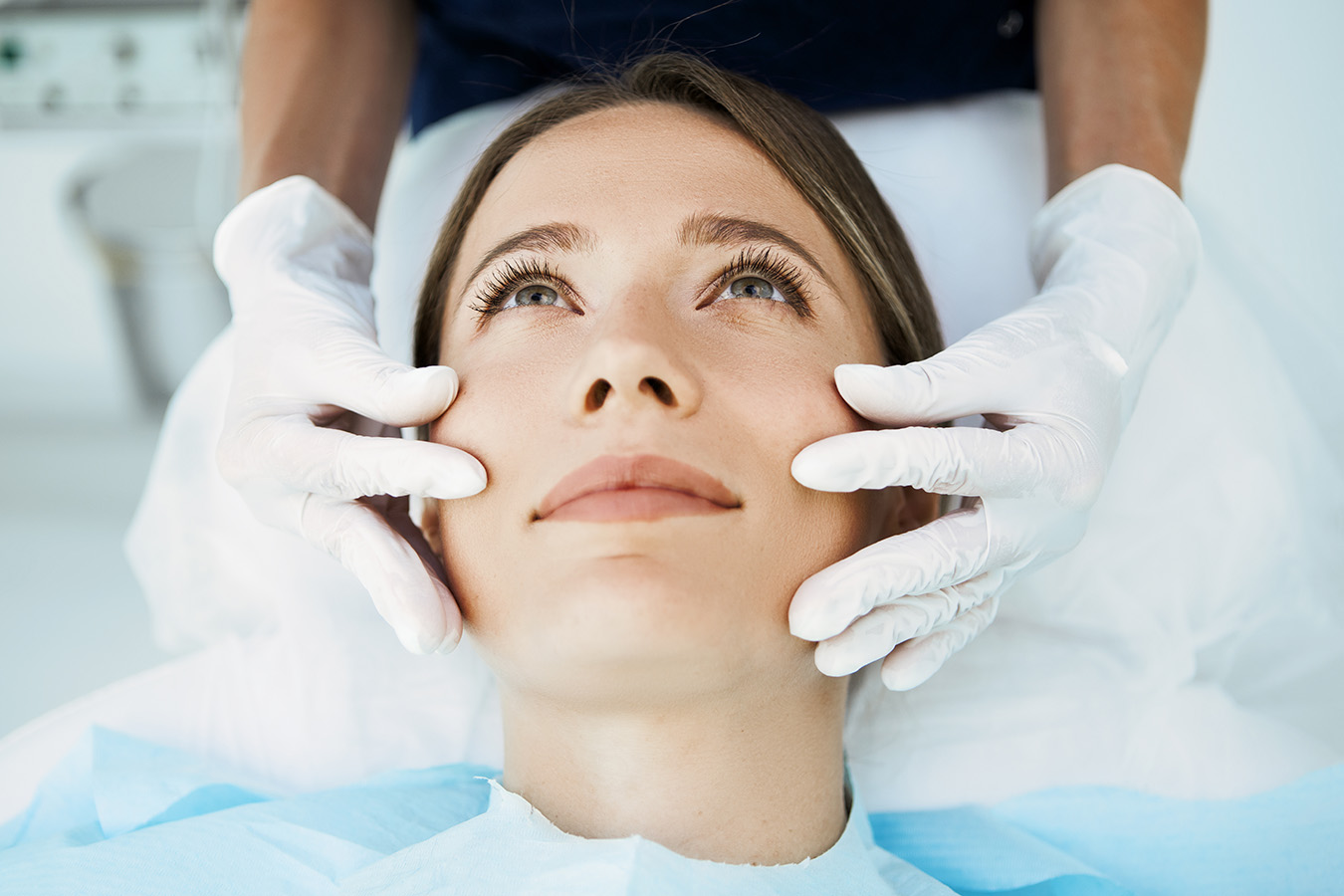What You Should Know Before Getting a Chemical Peel

Brides-to-be and grandmas alike are getting chemical peels. This popular dermatological procedure applies various active ingredients typically to the face to shed damaged skin cells and reduce the signs of wrinkles, pigmentation, and acne scars. If you’re considering a chemical peel, what kind of results should you expect? Can this treatment for sun damage actually help prevent skin cancer? Are chemical peels effective for dark skin?
“They can be safe for all skin types and colors,” says Shasa Hu, M.D., cosmetic dermatologist with the University of Miami Health System. “Believe it or not, my patients seeking chemical peels range from their early 20s to late 70s. Some simply want brighter, glowing, smoother skin. Others are seeking relief from acne scars, sun damage, or crows’ feet.”
Who should avoid chemical peels?
For safety reasons, pregnant women or lactating mothers, people with known sensitivity to the ingredients, those undergoing radiation treatment for skin cancer, and anyone with a severe epidermal condition that increases sensitivity, such as skin lupus, should not get this treatment.
Can a chemical peel really improve the look of your skin?
The results of a chemical peel depend on the type and severity of the skin condition being treated, the type and concentration of the chemicals, and skin sensitivity. Some of the active ingredients penetrate below the epidermis, while others are intended to stay on top of the skin.
“Most superficial chemical peels used to brighten the complexion, for example, take only one session with glycolic acid to increase collagen production and improve skin elasticity. To treat acne scars, on the other hand, we recommend a series of three to five peels, six to eight weeks apart,” Dr. Hu says. “We start conservatively then gradually become more aggressive with the treatment. I discuss this with patients to manage their expectations of the results and side effects.”
Are there side effects to chemical peels?
Immediately following a chemical peel of any type, you should expect a little redness on the outer layer of skin like a mild sunburn, at the very least, for a couple days, possibly with some peeling. More severe reactions involve 10 days of healing with peeling and/or scabbing. “The degree of irritation depends on how deep the peel is and the skin’s sensitivity,” Dr. Hu says. “When we apply only a single chemical agent, the peel typically has a predictably mild reaction. When the treatment is too aggressive, chemical peels can cause scarring.”
How to get the most out of this treatment
Before you schedule an appointment with a dermatologist or medi-spa aesthetician, ensure your skincare routine prepares your face for the best results. “Otherwise, it’s like going to the dentist when you never brush your teeth,” says Dr. Hu. Start each day with a gentle cleanser, hydrating moisturizer, and sunscreen with at least SPF 35. “Without a daily skincare routine that includes sunscreen, chemical peels will stress the skin and cause damage. Chemical peels are effective only with combined efforts of prevention.”
To prevent additional irritation following a chemical peel, stop applying topical medications and skin care products with certain ingredients, like retinols, three to five days before any type of chemical peel. Your provider can discuss exactly which products to discontinue or pause before and during your treatment session(s).
Chemical peels can serve as preventive medicine.
Beyond reducing pigmentation and preventing wrinkles, chemical peels are used to help prevent the development of skin cancer in sun-damaged skin.
Those with severe sun damage are at higher risk for developing skin cancer. Pre-skin cancer cells (premalignant) cause lesions known as actinic keratosis. “There’s evidence that glycolic acid and trichloroacetic acid (TCA) peels can help reverse and treat this keratosis on the face, arms, and chest, which are common areas for this form of pre-skin cancer,” Dr. Hu says.
“These peels are not a cure nor treatment for skin cancer, but can treat the potential precursors for skin cancer in severely sun-damaged skin. Patients will see an improvement, but peels cannot provide a 100 percent reversal of sun damage.”
Chemical peels can also help control and treat certain kinds of acne.
“We use this treatment to provide temporary relief of comedonal acne (blackheads and whiteheads) and inflammatory acne (clogged pores caused by bacteria),” says Dr. Hu. “Peels can open and unclog pores, reduce pigmentation caused by earlier acne, and reduce excessive oil production.
“Chemical peels are not appropriate to treat cystic acne (red, angry bumps deep under the skin). That type of acne requires aggressive medical treatment. So, don’t go to a medi-spa; see a dermatologist.”
If you’re ready to speak with an experienced dermatologist to learn if a chemical peel is right for your skin, contact UHealth’s cosmetic dermatology department.
Dana Kantrowitz is a contributing writer for UMiami Health News.
Tags: cosmetic surgery, Dr. Shasa Hu, skin irritation, skin tone
